Wine knowledge for Servers can elevate your skills as a Server and increase tips. Whether you’re serving at a Michelin Star restaurant or a casual bistro, understanding wine improves the dining experience.
You’re not a Sommelier, but guests still rely on you for recommendations. Knowing wine types, pairings and etiquette boosts confidence and service quality.
This guide covers essential wine knowledge for servers, including tasting basics, storage tips and practical ways to sharpen your expertise.
Wine Types
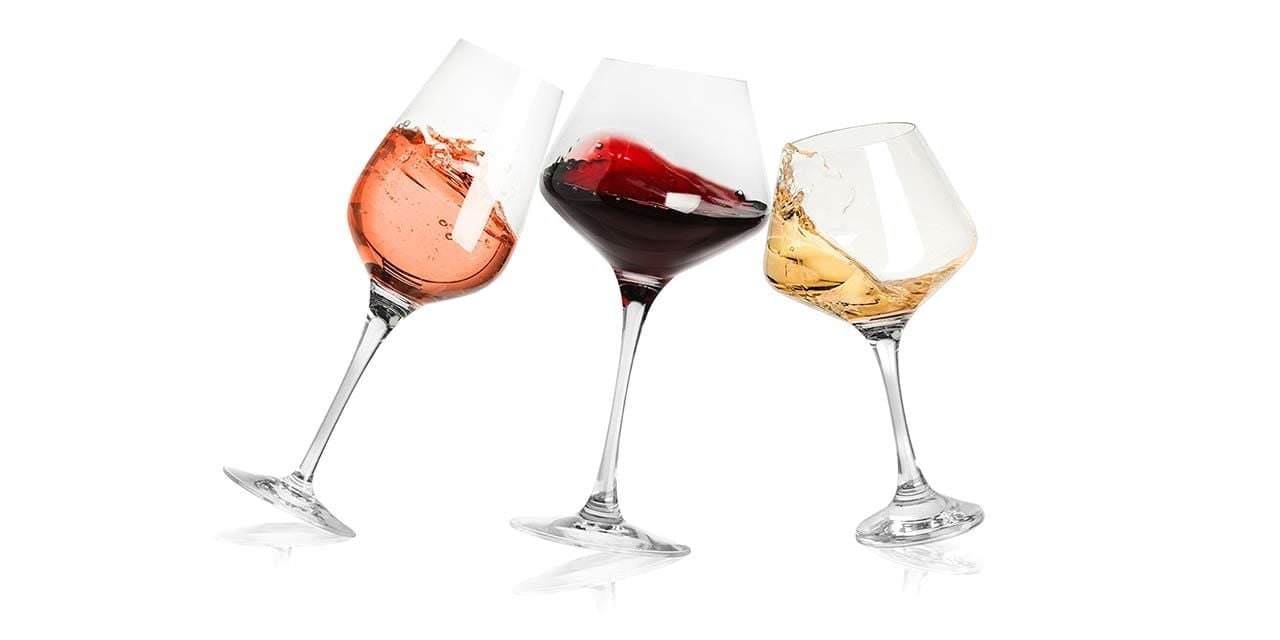
Knowing the different types of wine is essential for building a solid understanding of wine overall.
It also allows you to make recommendations based on customer preferences or the dishes they’re ordering.
So for this aspect of basic wine knowledge for Servers, here are the main categories you should be aware of:
- Red wine: Red wines are made from the dark grape varieties and typically have stronger flavors. Popular varieties include merlot, cabernet sauvignon, pinot noir and syrah.
- White wine: Produced from light grapes, white wines are lighter and more refreshing. chardonnay, sauvignon blanc, riesling and pinot grigio are some common examples.
- Rosé: This type of wine has a pink hue that can range from pale pink to a deep orangish red. It is made with red grapes but with less skins than red wines. This is a light wine, perfect for warmer weather.
- Sparkling wine: Even though French Champagne is the most well-known sparkling wine, this bubbly wine is produced worldwide. The bubbles are the result of the second fermentation process.
- Dessert wine: These wines are sweet and often enjoyed after a meal. Popular varieties include Port, sherry and moscato.
If you know wine categories, then you can suggest wines based on what customers like or what food they are ordering.
Wine Labels
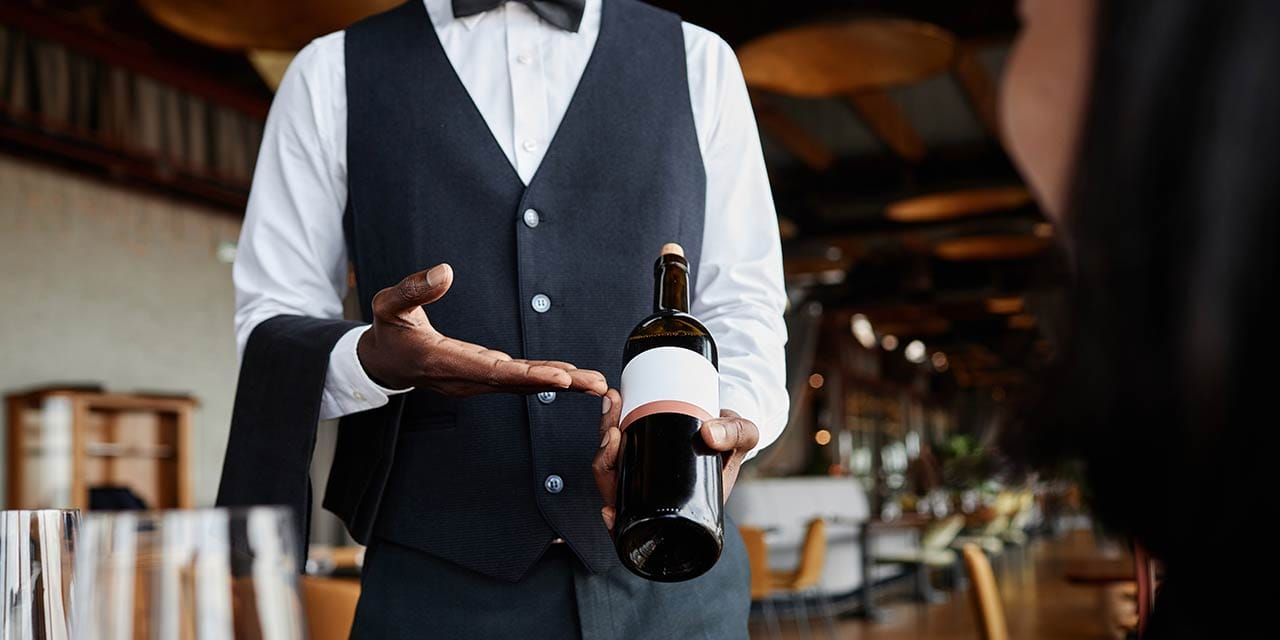
Wine labels can be confusing because different wine-producing regions have their own unique labeling systems and terms. Still, understanding the following details can help you make sense of them:
- Vintage: This refers to the year the grapes were harvested. While some wines become better with age, wines like sauvignon blanc or Beaujolais should be fresh. So, checking the vintage basically helps you gauge the wine's current state.
- Origin: This is the region or country of production, which plays a huge role in the flavor profile. For example, a pinot noir grown in Oregon will taste different from one that’s from Burgundy.
- Varietal: Varietal refers to the type of grapes used in production. Typical varietals include cabernet sauvignon, merlot and chardonnay.
- Alcohol content: Wine labels display the ABV — the percentage of alcohol by volume. Higher-ABV wines usually have a stronger taste.
Wine Pairing Rules
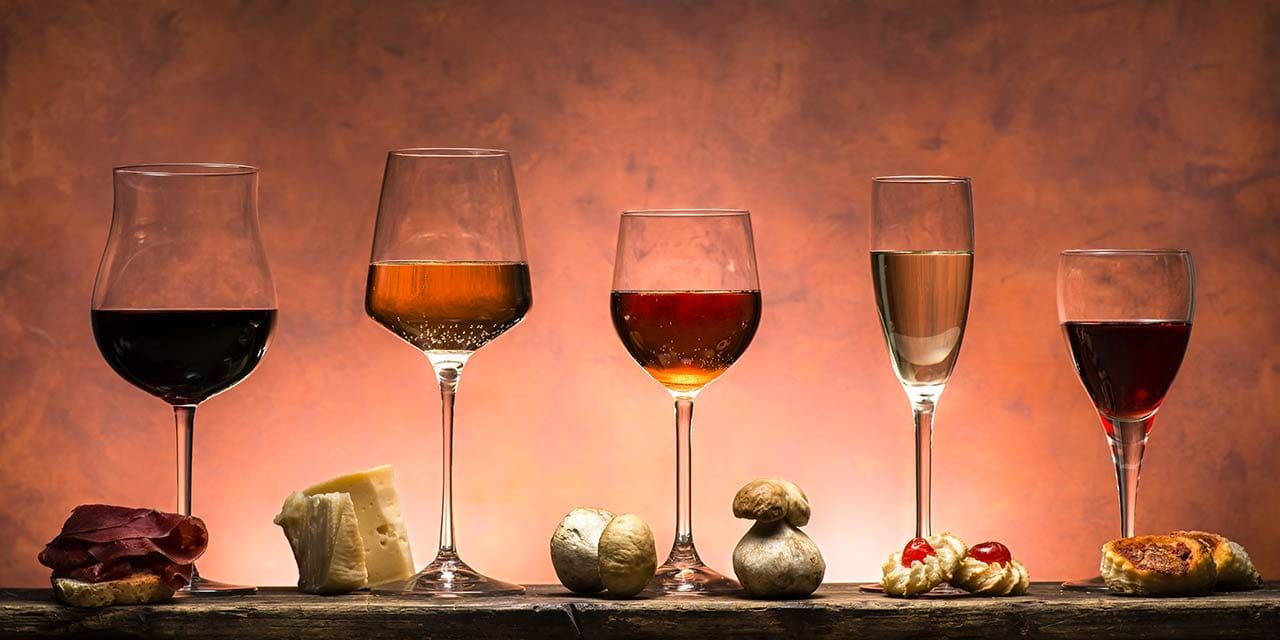
Servers are often in charge of pairing food and wine. While this can sometimes be complicated, here are a few basic rules you should keep in mind:
- Red wine + red meat: The tannins in wines like cabernet sauvignon and syrah balance out the richness of red meats.
- White wine + fish or poultry: The lighter white wines like chardonnay go great with chicken and seafood dishes or pasta with cream sauce.
- Rosé + salads and lighter dishes: Rosé works great with salads, sandwiches and grilled veggies because of its balanced flavor profile and refreshing acidity.
- Sparkling wine + almost everything: Even though they go with almost every dish you could imagine, sparkling wines are especially good with appetizers and salty dishes.
- Dessert wine + dessert: Even though this sounds straightforward, you should pay attention to matching sweet desserts with sweet wine and fruity desserts with fruity and light wine. Think Port with chocolate cake or a late-harvest riesling with fruit tarts.
Wine Cheat Sheet for Servers
Here’s a quick reference guide you can use to refresh your memory when needed.
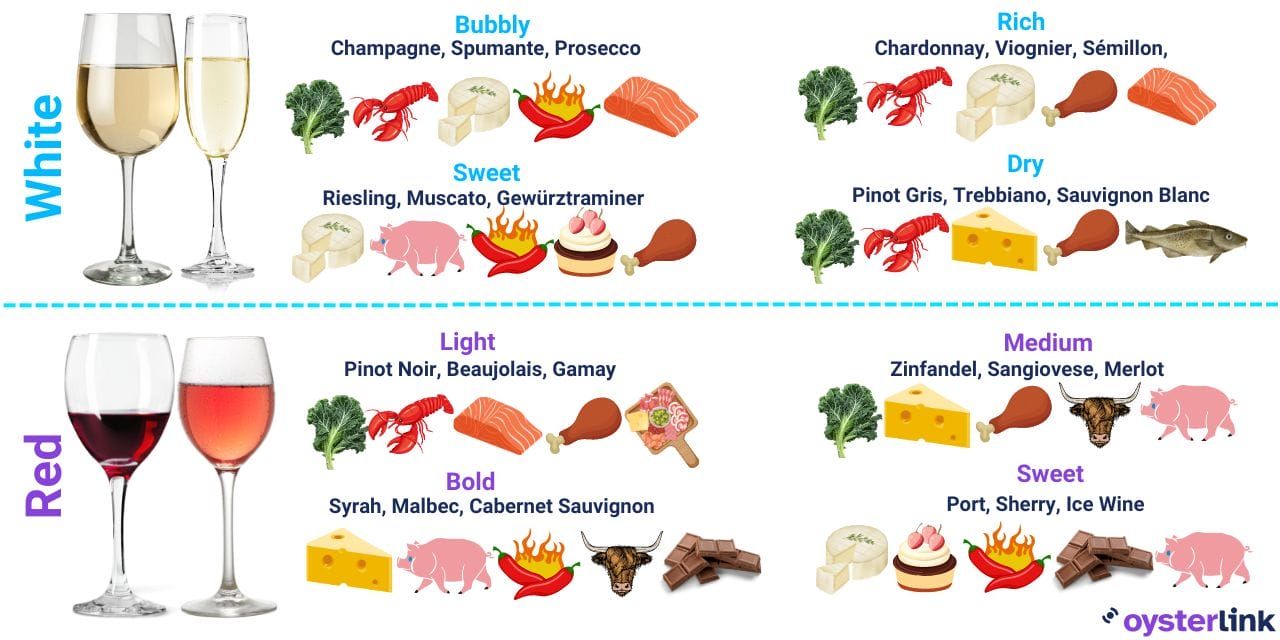
[Source: Backbar]
Wine Service Etiquette
Serving wine properly is an essential part of providing a great dining experience. Here are the four key steps to follow:
- Present the bottle: Make sure the bottle label faces the guest and confirm this is the wine they ordered.
- Uncork the wine: Open the bottle using a trusty wine-key. Give the bottle a good wipe after opening (especially for reds with sediment).
- Pour the wine: Pour a small amount of wine for the person who ordered it to taste. If they like it, serve the rest of the guests clockwise, starting with women. Once all the women have been served, continue to pour for the men, following the same clockwise pattern.
- Refill the glasses: Make sure not to overfill the glasses. Wine glasses should only be one-third full.
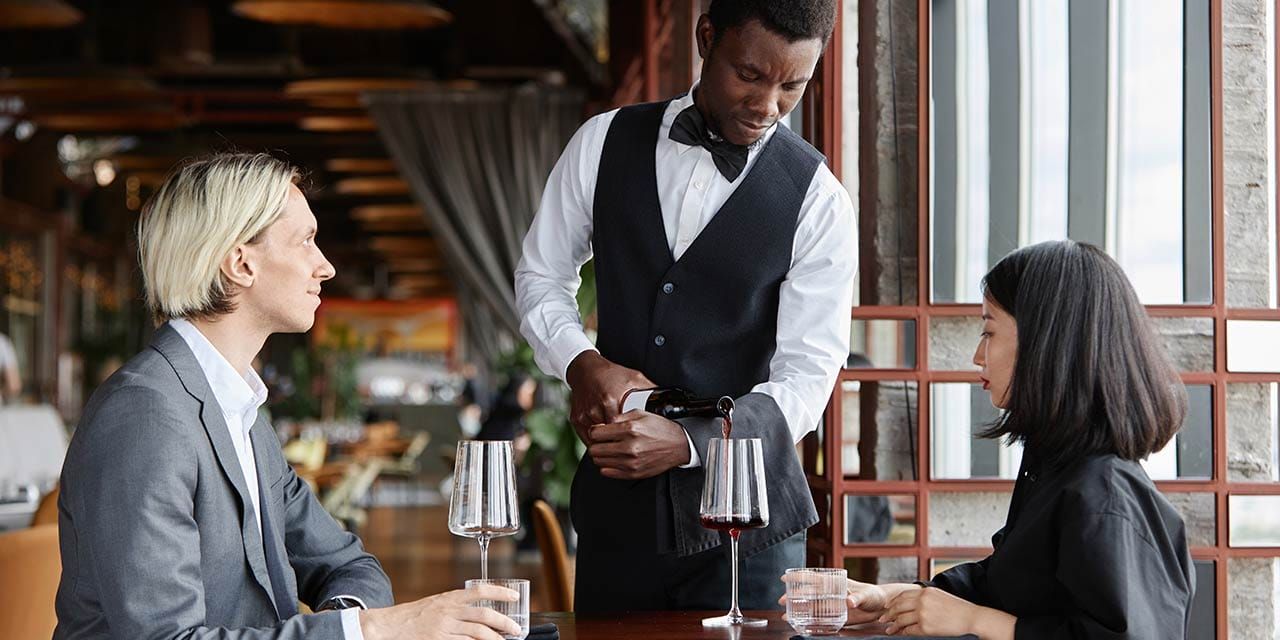
See also: How Old Do You Have To Be To Serve Alcohol Across the US?
Wine Tasting Basics
When explaining to customers how to taste wine or if you're new to the process yourself, focus on these key aspects:
- Look: Examine the color and clarity of the wine.
- Smell: Swirl the glass and smell the wine. Pay attention to aromas — do you smell notes of fruit, earth or spices?
- Taste: Take a sip. Think about the wine’s sweetness, acidity and overall balance.
- Finish: How long does the taste stay in your mouth after you swallow? The longer the finish, the better the wine.
Wine Storage
Improper storage can ruin even the best bottle of wine. Here are some tips to keep bottled wine in prime condition for years to come:
- Temperature: Keep red wine at around 55–65°F and white wine at 45–50°F.
- Light: Keep the wine bottles away from light, as it can degrade the flavor.
- Humidity: Aim for 50–80% humidity in your wine storage. This way, you’ll keep the corks from drying out. Dry corks can let air into the bottle, potentially spoiling the wine.
- Position: Store bottles on their side to keep the cork moist.
If you’d like to build extra knowledge beyond restaurant basics, watch this YouTube video where a certified Sommelier explains wine storage tips that also apply to everyday living spaces.
15 Questions Every Wine Server Should Be Able to Answer
To excel as a Wine Server, it's important to have a good understanding of key wine concepts. The following questions are here to help you assess your wine knowledge as well as your readiness to serve guests with confidence and expertise.
- What are the main types of wine?
- How is red wine different from white wine?
- What are the main regions known for producing quality wines, and what are their specialties?
- What is the difference between sparkling wine and Champagne?
- How do you read a wine label?
- Which wine would go best with steak?
- Can you drink red wine with fish?
- What wine pairs well with cheese?
- How do you store an open bottle of wine?
- What’s a good wine for a special occasion?
- How is rosé made?
- What is tannin in wine?
- Is older wine always better?
- How do you properly taste wine and identify its key characteristics?
- What are some good wine choices for a vegetarian or light meal?
Wine Knowledge for Servers: 5 Useful Tips To Improve
With a bit of study and practice, you’ll be able to offer great recommendations and serve wine like a pro. Here are five tips to improve your wine knowledge:
- Taste different wines regularly: The more wines you taste, the more familiar you’ll become with different characteristics and varieties.
- Visit nearby wineries: Gaining practical experience in vineyards allows you to understand the wine-making process on a deeper level.
- Read books or blogs or watch YouTube videos about wine: These easily available resources can provide valuable insights about wine.
- Talk with a Sommelier: If you work with a Sommelier, pick their brain and take advantage of their knowledge.
- Take wine tasting classes: Enroll in classes to develop your tasting skills, learn about different wine styles and enhance your overall wine knowledge
Level Up Your Hospitality Skills With OysterLink
Strong wine knowledge helps Servers deliver better guest experiences, earn higher tips and stand out professionally.
Understanding wine types, pairings and proper service elevates your confidence and performance.
If you’re looking to grow these skills, OysterLink offers practical guides, industry insights and career-building resources to help you advance in hospitality.
It’s an easy way to keep improving, expand your knowledge and take the next step in your career.










Loading comments...